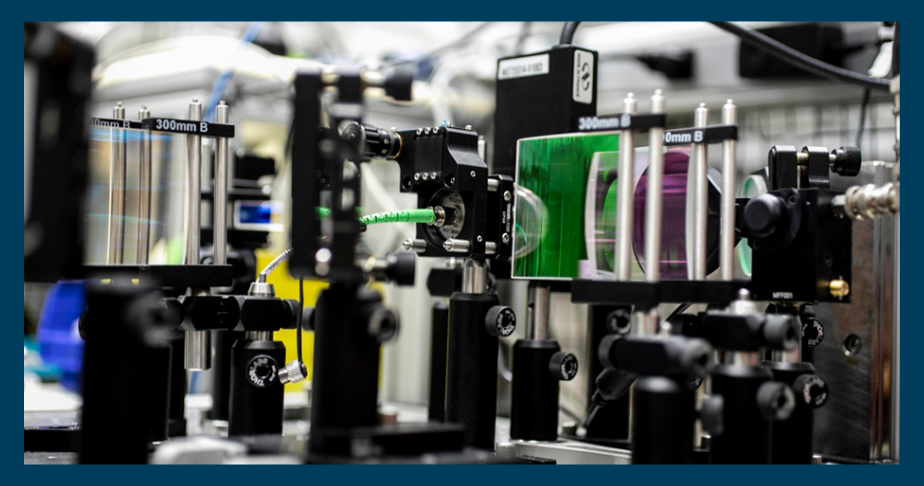
A close up of the optics of the ACME II experimental apparatus. The ACME collaboration attempts to detect new particles through measuring the distribution of electrical charge in the electrons in a cold beam of thorium oxide molecules.
goal statement
To discover new fundamental physics
The Opportunity
Recent advances in precision measurement create attractive new opportunities for discovery in fundamental physics. Grants in this program support compelling small-scale experiments that leverage precision measurement to advance our understanding of the fundamental particles and forces of the universe. While this physics has traditionally been explored at large-scale facilities like the LHC, LIGO, etc., advances in areas such as the precision manipulation of cold matter and quantum nondemolition measurement create new opportunities for insight from ‘small-scale’ experiments; experiments that fit in a typical university physics research lab. Areas of fundamental physics that might be explored by grants in this program include, but are not limited to, well-motivated searches for dark-matter or for other new particles and/or forces, experiments that provide new insight into gravity / quantum gravity, tests of established symmetry principles, and experiments that explore quantum foundations.
Funded projects in this program often aim both to push the boundaries of current measurement capabilities through the development of new instruments or experimental methods, and to deploy those new capabilities in innovative and creative ways that shed new light on pressing questions in fundamental physics.
Support for theory is, in general, not available except in those cases where new theory is needed to inform the design or analysis of associated experimental work.
Signature Initiatives
-
The eEDM Initiative
Attempts to find evidence of new fundamental particles through experiments that measure the electron's electric dipole moment.
Learn more -
Four Foundations Collaboration
A $30 million investment by four major US-based science foundations to support small-scale experiments at the frontiers of physics.
Learn more
Apply
The Foundation is not currently accepting grant applications in Small-Scale Fundamental Physics. Pending evaluation of the outcomes of currently supported projects, additional grantmaking is anticipated in 2026.